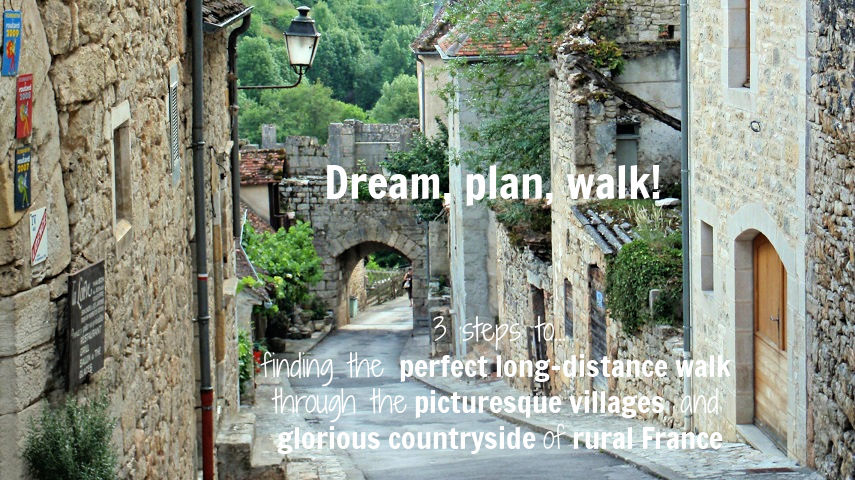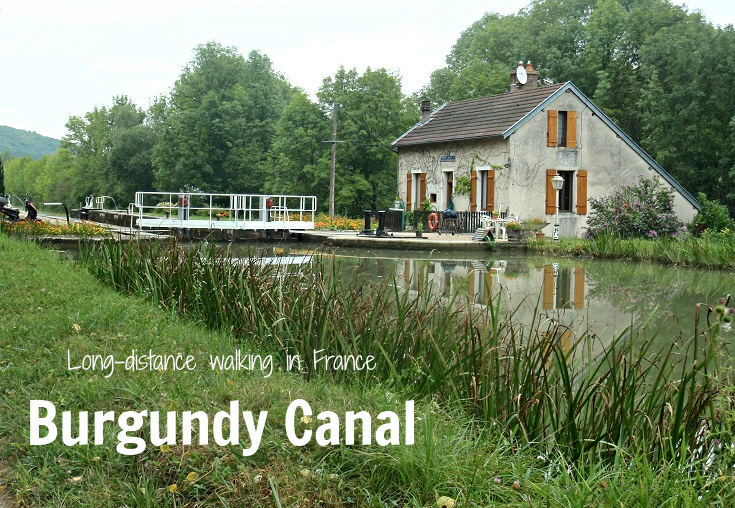
(Published August 2013, last updated March 2025)
Two hundred and forty kilometres (150 miles) of flat, easy walking, rural scenery, small villages, historical splendour—it’s not hard to find a good reason to walk (or cycle) along the Burgundy Canal (also known as the Canal du Bourgogne en français)!
Within easy walking distance or a shuttle bus ride from the canal, you’ll find seven châteaux, ten churches, one abbey, two of France’s ‘most beautiful villages’ and forty other points of interest, such as canal bridges, museums, old buildings and of course, the canal tunnel.
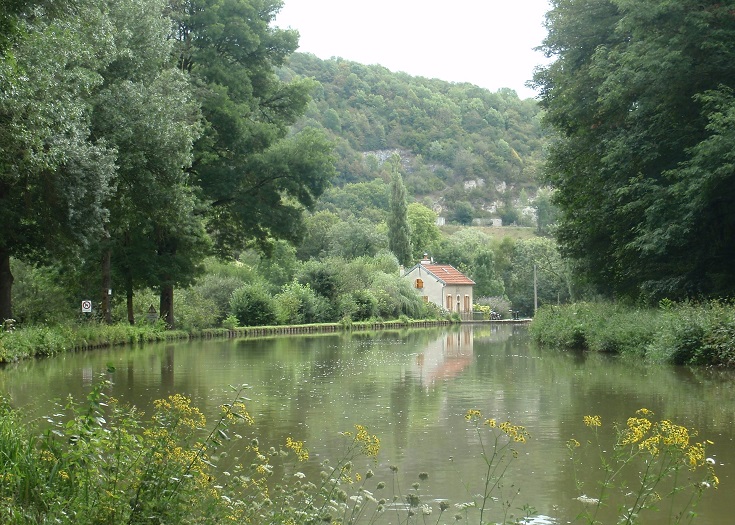
Écluse 17 S Rempart (between Crugey and Veuvey-sur-Ouche)
Although most of these distractions are located along the western side between Migennes and Pouilly-en-Auxois, the eastern side continuing on to Saint-Jean-de-Losne does, I think, have more than its fair share of beautiful lock houses (maisons d’éclusier en français) and stunning scenery.
Look inside the BURGUNDY CANAL (PDF) guidebooks
Where is the Burgundy Canal in France?

Map of the Burgundy Canal from Migennes to Pouilly-en-Auxois
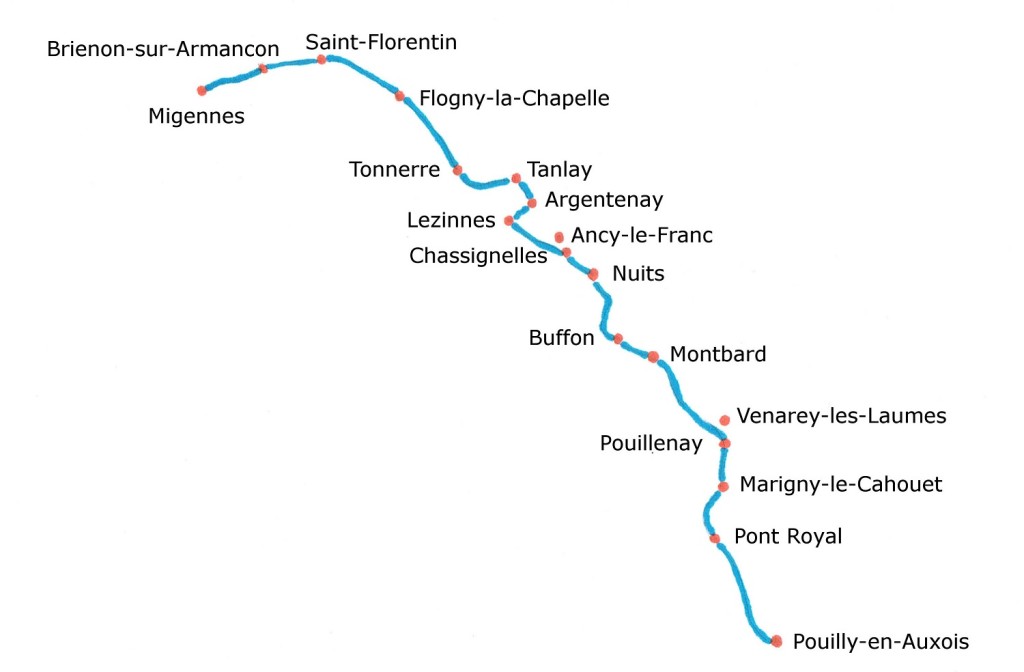
Map of the Burgundy Canal from Pouilly-en-Auxois to Saint-Jean-de-Losne
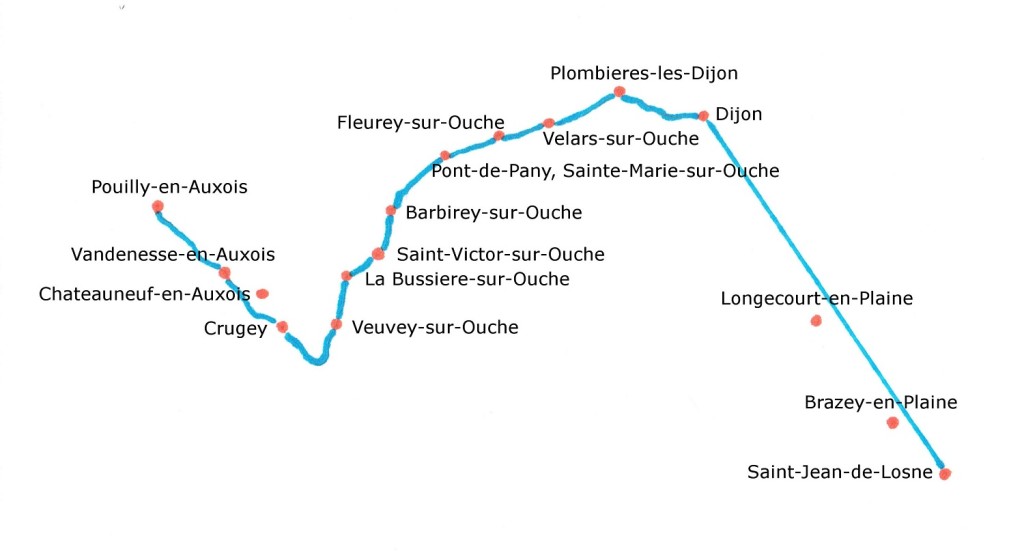
For the first forty-odd kilometres (thirty miles) after leaving Migennes, the canal is straight with only a few twists and turns to provide any sense of mystery. If you can ride a bike (which I can’t), then cycling this section will free up some time for exploring Saint-Florentin and Tonnerre.
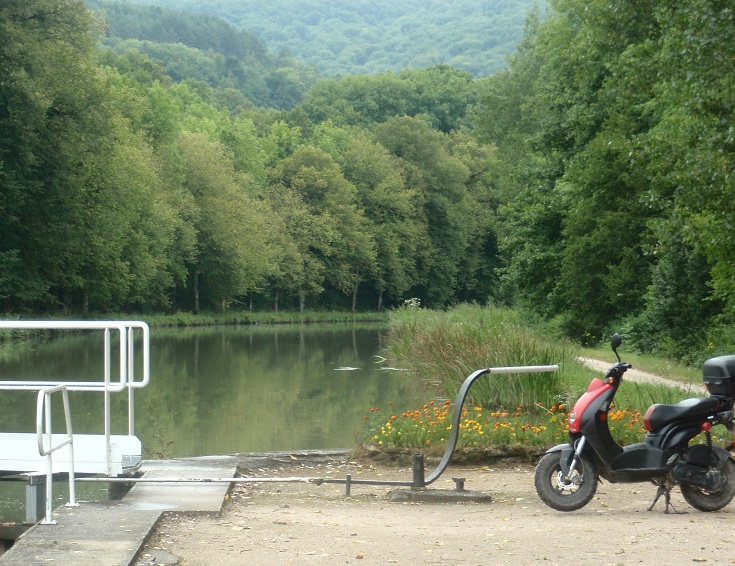
Écluse 30 S Dennevy (between Saint-Victor-sur-Ouche and Barbirey-sur-Ouche)
From Tonnerre to Dijon, the canal more closely resembles the meandering path you may have imagined it to be and when there is no boat traffic to distract you, it is easy to imagine horses plodding along the same tow path hundreds of years ago, pulling a barge behind them.
As you walk, you’ll see glimpses of centuries-old church steeples through the trees, carpets of wildflowers growing down towards the water’s edge, and, in summer, you’ll walk along lanes and roads flanked with fields of bright sunflowers.
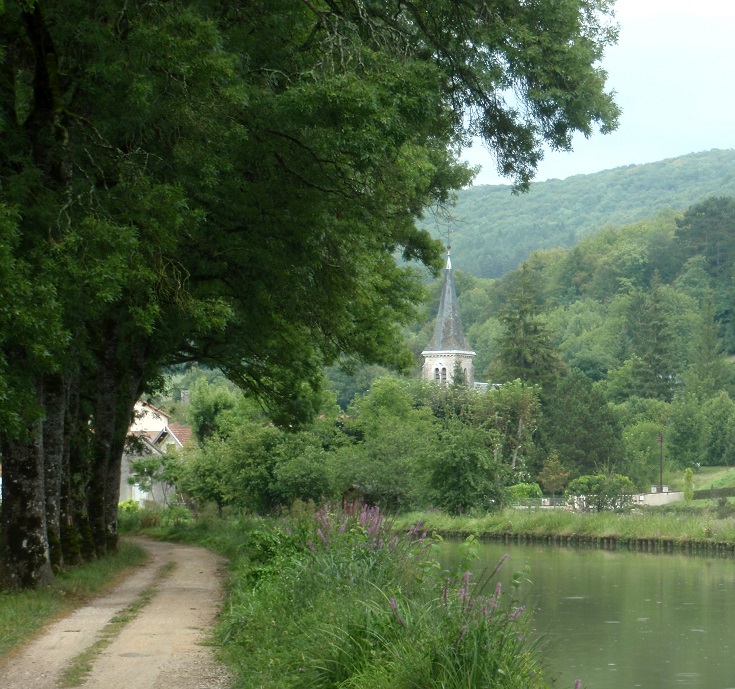
Approaching Écluse 29 S Saint-Victor (at Saint-Victor-sur-Ouche)
The path from Dijon to Saint-Jean-de-Losne is open and exposed for most of the way, with little shelter from the French summer sun. The engineers who designed this path appear to have drawn a straight line on the map and carved the shortest possible route between the two towns. This section is well-suited to cycling. I recommend renting a bicycle in Dijon and treating yourself to a leisurely cycle to the end of the canal.
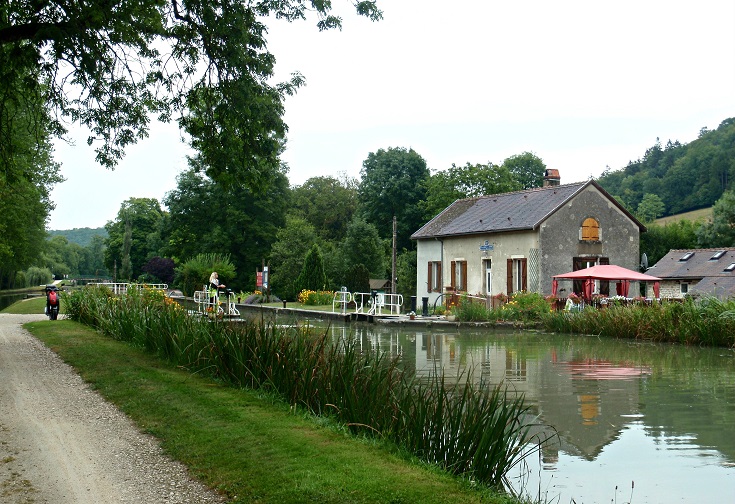
Écluse 32 S Gissey (between Barbirey-sur-Ouche and Pont-de-Pany)
Accommodation along the Burgundy Canal
There are plenty of options for overnight accommodation on a long-distance walk along the Burgundy Canal, most of them located on, or very close to, the canal towpath.
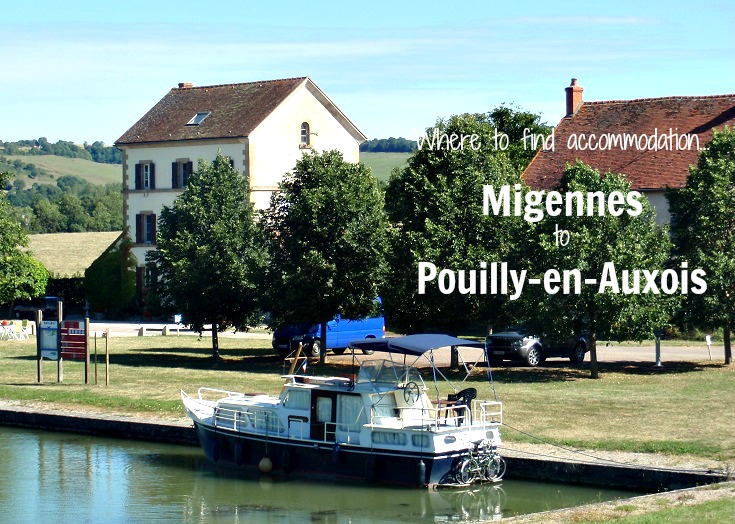
Between Migennes and Pouilly-en-Auxois, accommodation is available in the following towns, with distances given from the starting point of Migennes.
0.0 km (0.0 mi) Migennes (on the canal)
18.4 km (11.5 mi) Saint-Florentin (500m off the canal)
44.4 km (27.8 mi) Tonnerre (750m off the canal)
52.5 km (32.8 mi) Tanlay (700m off the canal)
59.3 km (37.1 mi) Argentenay (230m off the canal)
63.1 km (39.4 mi) Lèzinnes (600m off the canal)
70.9 km (44.3 mi) Ancy-le-Franc (800m off the canal)
75.2 km (47 mi) Chassignelles (on the canal)
83.8 km (52.4 mi) Nuits (970m off the canal)
94.7 km (59.2 mi) Buffon (on the canal)
101.9 km (63.7 mi) Montbard (on the canal)
114.3 km (71.4 mi) Venarey-les-Laumes (1.7km/1mi off the canal)
119.3 km (74.6 mi) Pouillenay (720m off the canal)
125.8 km (78.6 mi) Marigny-le-Cahouët (200m off the canal)
136.5 km (85.3 mi) Pont-Royal (on the canal)
154.3 km (96.4 mi) Pouilly-en-Auxois (on the canal)
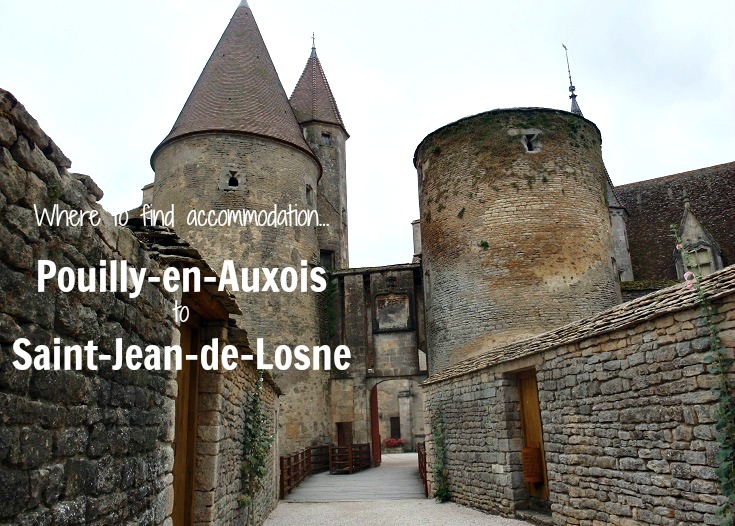
Between Pouilly-en-Auxois and Saint-Jean-de-Losne, accommodation is available in the following towns, with distances given from the starting point of Pouilly-en-Auxois.
0.0 km (0.0 mi) Pouilly-en-Auxois (on the canal)
8.5 km (5.3 mi) Vandenesse-en-Auxois (on the canal)
9.6 km (6 mi) Châteauneuf-en-Auxois (1.4km/0.9mi off the canal)
14.6 km (9.1 mi) Crugey (on the canal)
25 km (15.6 mi) La Bussière-sur-Ouche (430m off the canal)
27.8 km (17.4 mi) Saint-Victor-sur-Ouche (on the canal)
29.3 km (18.3 mi) Barbirey-sur-Ouche (750m off the canal)
35.9 km (22.4 mi) Sainte-Marie-sur-Ouche (on the canal)
42 km (26.3 mi) Fleurey-sur-Ouche (on the canal)
47 km (29.4 mi) Velars-sur-Ouche (on the canal)
52.5 km (32.8 mi) Plombières-lès-Dijon (300m off the canal)
58 km (36.3 mi) Dijon (on the canal)
73.4 km (45.9 mi) Longecourt-en-Plaine (670m off the canal)
87.2 km (54.5 mi) Saint-Jean-de-Losne (on the canal)
How to book accommodation in French
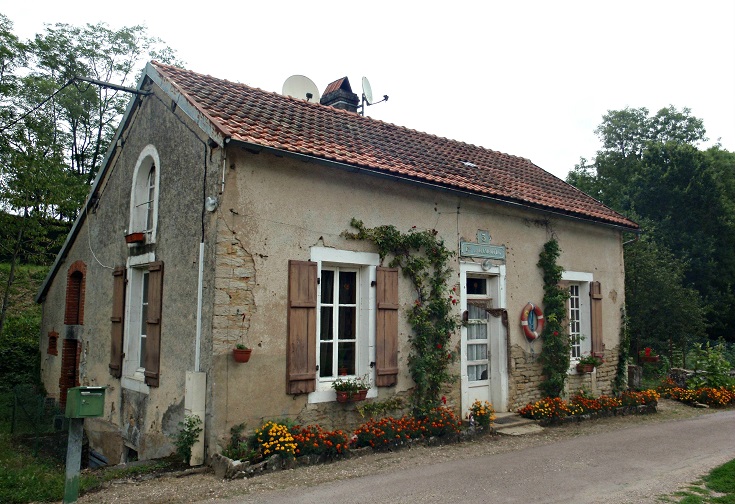
Écluse 3 S Rambourg (between the canal tunnel and Vandenesse-en-Auxois)
Suggested itinerary for walking the Burgundy Canal
Although sunflowers are not prolific along the canal, they are a highlight wherever they appear and so I would do this walk in summertime when they are at their best. The weather is not unbearably hot at that time of year (says an Australian used to tropical summers) and the canal is not a difficult walk.
As I’ve already mentioned that it’s possible to cycle part (or all) of this journey, and as it would be a little unfair of me to give advice that hampers you with my balance limitations, I am going to slip into that parallel universe where I can ride a bike as well as anybody.
For me, the must-dos on the first section of the Burgundy Canal from Migennes to Pouilly-en-Auxois are Château Ancy-le-Franc, l’Abbaye de Fontenay and the ‘most beautiful village’ of Flavigny-sur-Ozerain. However, I have also added a day at Tonnerre, from where I would visit either Château de Maulnes or the ‘most beautiful village’ of Noyers-sur-Surein—or both.
Choosing the right day to start the walk is critical or you may find yourself at Ancy-le-Franc on a Monday when the château is closed. The opening days for each monument vary throughout the year, so check these details carefully when planning your schedule. If you leave Migennes on a Saturday, you should find everything open on the days you pass through (except perhaps getting a key to the church in Chassignelles).
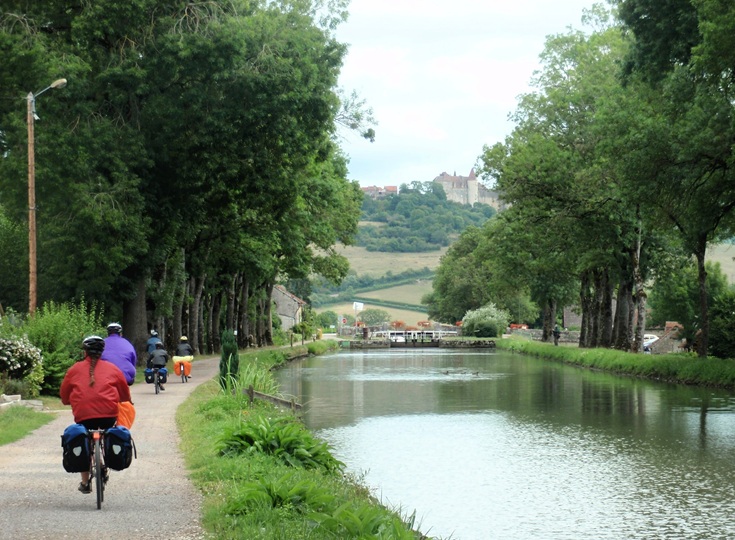
Châteauneuf-en-Auxois is first visible on the approach to Écluse 8 S Vandenesse
The second section of the Burgundy Canal from Pouilly-en-Auxois to Saint-Jean-de-Losne can be walked very easily in four days—but that would mean rushing past all the delights the canal has to offer.
Almost from the start of the walk, you’ll see the fortified château at Châteauneuf-en-Auxois, beckoning you from a far-off hill. Walk past it if you must—but I strongly recommend making the three-kilometre (two-mile) detour and spending your first night soaking up all the history and beauty that this ‘most beautiful village’ has to offer.
I love train travel and the often unique view of the countryside that it provides, so a ride on the steam train along the River Ouche—between Pont d’Ouche (on the canal) and Bligny-sur-Ouche—is high on my list when I do this walk.
If, like me, you can’t really ride a bike, then the first day’s walking can easily be broken up with an overnight stop at Saint-Florentin and the section from Montbard to Pouilly-en-Auxois is best broken with a stop at Marigny-le-Cahouët. The final stage from Dijon to Saint-Jean-de-Losne can be walked and the return to Dijon made the following day by train.
With that in mind, this is what I would do in planning my journey along the Burgundy Canal…
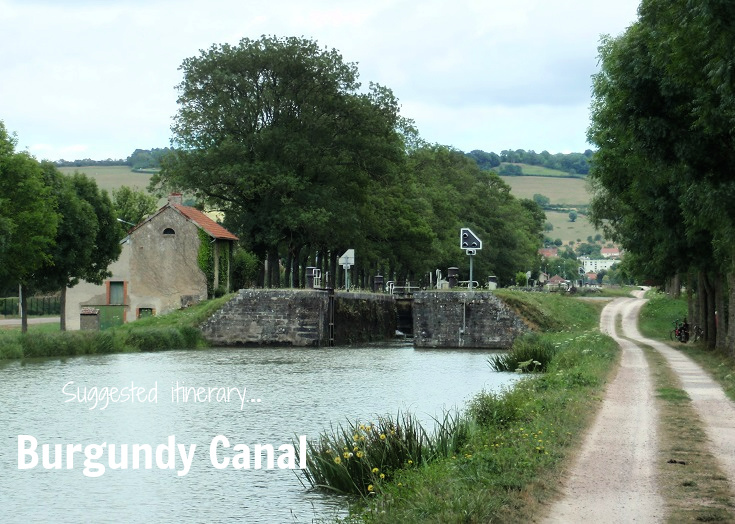
Day 1 Cycle from Migennes to Tonnerre (44.4km/27.8mi), returning the bike in Tonnerre.
Day 2 Rest day in Tonnerre. Visit the nearby sites, such as Château de Maulnes and the ‘most beautiful village’ of Noyers-sur-Serein (by taxi or bicycle).
Day 3 Walk from Tonnerre to Lézinnes (18.7km/11.7mi). Visit Château de Tanlay along the way.
Day 4 Walk from Lézinnes to Chassignelles (12.1km/7.6mi). Visit Château d’Ancy-le-Franc along the way and the church of Saint-Jean Baptiste in Chassignelles.
Day 5 Walk from Chassignelles to Montbard (26.7km/16.7mi). Visit la Grande Forge along the way.
Day 6 Cycle from Montbard to Venarey-les-Laumes (25.6km/16mi). This distance includes a detour to visit Abbaye de Fontenay from Montbard. When you arrive in Venarey-les-Laumes, visit the nearby MuséoParc Alésia.
Day 7 Cycle from Venarey-les-Laumes to Pouilly-en-Auxois (50.8km/31.8mi), returning to Montbard by train to return the bike. This distance includes a detour to visit the ‘most beautiful village’ of Flavigny-sur-Ozerain, then loops back to rejoin the canal at Pouillenay.
Day 8 Walk from Pouilly-en-Auxois to Châteauneuf-en-Auxois (11km/6.9mi). Although boat cruises through the canal tunnel will not be operating in 2025, it is well worth visiting the tunnel museum at the port before beginning your day’s walk along the overhead path.
Day 9 Châteauneuf-en-Auxois to la Bussière-sur-Ouche (17.2km/11mi). Walk along the canal as far as Pont d’Ouche and take the tourist train ride along the river to Bligny-sur-Ouche. To return to the canal, catch bus 117 back to Pont d’Ouche (or stay on the bus to Veuvey-sur-Ouche or la Bussière-sur-Ouche).
Day 10 Walk from La Bussière-sur-Ouche to Fleurey-sur-Ouche (17.2km/11mi). Detour off the canal to see the gardens at Barbirey-sur-Ouche. If you need to make up time, buses departing from here stop at most villages along the canal to Dijon.
Day 11 Walk from Fleurey-sur-Ouche to Dijon (16km/10mi).
Day 12 Cycle from Dijon to Saint-Jean-de-Losne (29.2km/18.3mi). After exploring Saint-Jean-de-Losne, take the train back to Dijon to return the bike.
Day 13 Dijon. Take a well-earned rest day, or two, to explore Dijon and visit the local wineries.
If you prefer to set your own agenda, I share the steps I take to calculate distances on any long-distance walk (using the Chemin de Stevenson as a case study).
Look inside the BURGUNDY CANAL (PDF) guidebooks
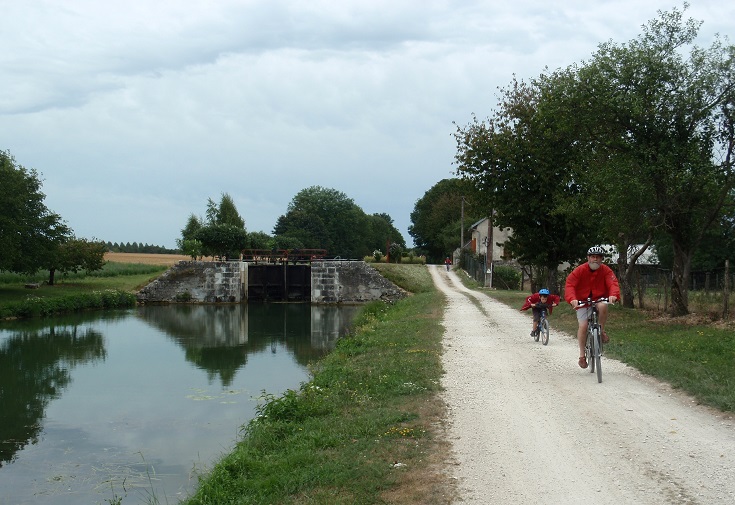
Passing cyclists near Écluse 78 Y Fulvy (between Chassignelles and Nuits)
Cycling along the Burgundy Canal
Bikes can be rented at several Tourist Offices along the canal, and can be returned to any of the offices, so cycling some, or all of the stages is very easy to arrange. VeliBourgogne has offices at Migennes, Saint-Florentin, Tonnerre, Ancy-le-Franc and Montbard (the Dijon office is currently closed). (Bicycle hire is available at several towns along the canal but most companies require that the bike be returned to the same office.)
In Dijon, bikes can be rented from Les 2 Roues. The bike will need to be returned to Dijon but good train connections between Dijon and Saint-Jean-de-Losne make this easy to do.
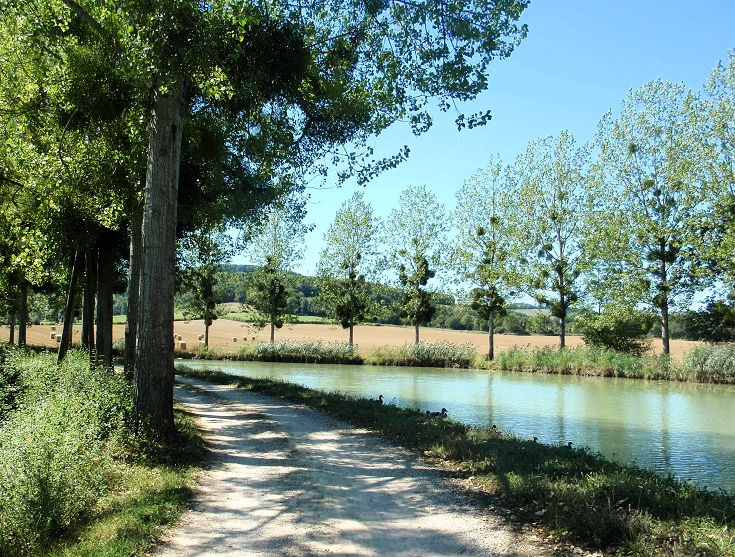
Haystacks and grazing fields line the canal near Écluse 43 Y Pouillenay 7 (between Venarey-les-Laumes and Pouillenay)
Luggage transfers along the Burgundy Canal
Luggage transfers along the Burgundy Canal are available through Le Porte Bagages. Bags are collected each morning and delivered to your next hotel during the day. Check carefully that you meet any size and weight restrictions and be sure to have your bags in the foyer on time each morning.

Écluse 44 Y Pouillenay 8 (between Venarey-les-Laumes and Pouillenay)
A little bit of history
The idea of a canal through Burgundy was first raised in the early sixteenth century, when plans were drawn up to connect Dijon to the River Saône at Saint-Jean-de-Losne—a distance of just over thirty kilometres (18.8 miles). Work was scheduled to start in 1530 but the Wars of Religion brought the project to a halt.
In the early seventeenth century, a much grander plan was proposed by Hugh Bradley, a Dutch engineer, to create a navigable path from the north of France all the way to the south by building canals to connect the Seine, Loire, Saône and Rhône rivers.
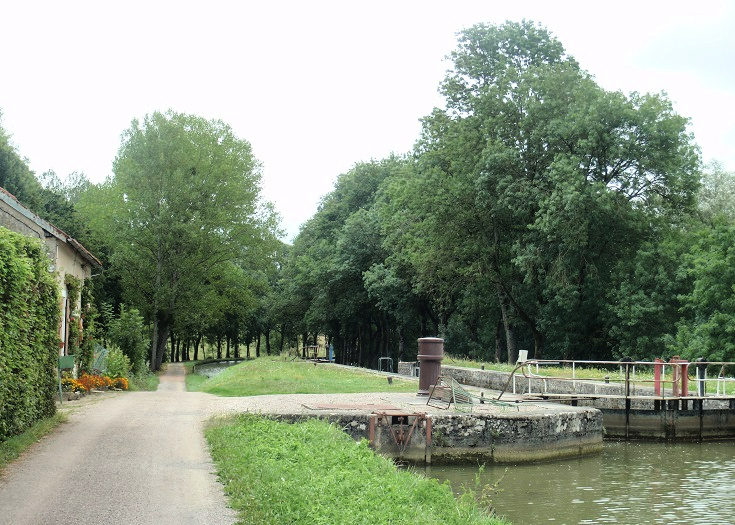
Approaching Écluse 3 S Rambourg (between the canal tunnel and Vandenesse-en-Auxois)
The Dukes of Burgundy, who ruled from Dijon, were not in favour of this proposal. Under the original plan, the shorter canal ended in Dijon and ensured the city’s role as a major commercial port. Under the new plan, Dijon would become one town of many along the canal and its importance as a commercial centre would be greatly reduced.
In 1676, the new plan was shown to Pierre-Paul Riquet, designer and chief engineer of the Canal du Midi. He declared it unfeasible. In 1727, Joseph Abeille revisited Hugh Bradley’s plan and proposed a route that connected the River Yonne to the Saône, roughly following the paths of the unnavigable Armançon, Brenne and Ouche Rivers. This is the path that the Canal de Bourgogne takes today.
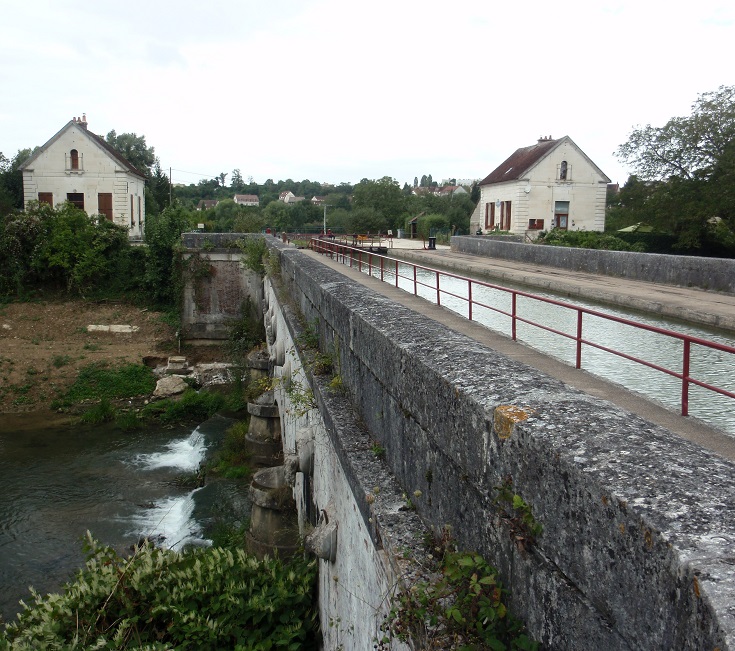
Canal-bridge over the river at Saint-Florentin
Another fifty years passed before King Louis XV gave approval for work to begin and agreed to fund construction between Migennes (on the River Yonne) and Pouilly-en-Auxois—the highest point along the canal. Construction of the canal from Pouilly-en-Auxois to Saint-Jean-de-Losne would be funded by the Dukes of Burgundy.
Work on the Yonne side began in 1775, and on the Saône side in 1781, and continued until 1793 when the French Revolution brought all work to a halt.
Construction resumed in 1807 under the orders of Napoléon and in 1808 the first vessel arrived in Dijon from Saint-Jean-de-Losne. By 1814, the canal was open as far as Pont-de-Pany. It was not until 1832—another eighteen years later—that the canal was opened to traffic along the entire route.
HIGHLIGHTS OF THE BURGUNDY CANAL
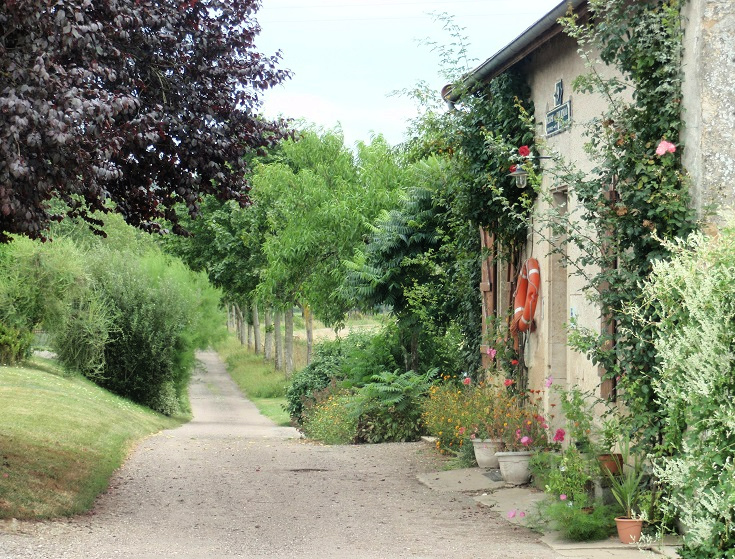
Écluse 9 S Fourneau (between Vandenesse-en-Auxois and Châteauneuf-en-Auxois)
Visit seven châteaux, one abbey and three of France’s ‘most beautiful villages’
Within easy walking, or cycling, distance or a short taxi ride from the canal, you’ll find seven châteaux, ten churches, one abbey and two of France’s most beautiful villages.
Located a half-hour drive to the north-east of Tonnerre, is Château de Maulnes, which boasts a distinctive five-sided façade and has recently been restored to its sixteenth-century splendour. Guided tours are available every day except Monday and Tuesday, or you are free to explore on your own.
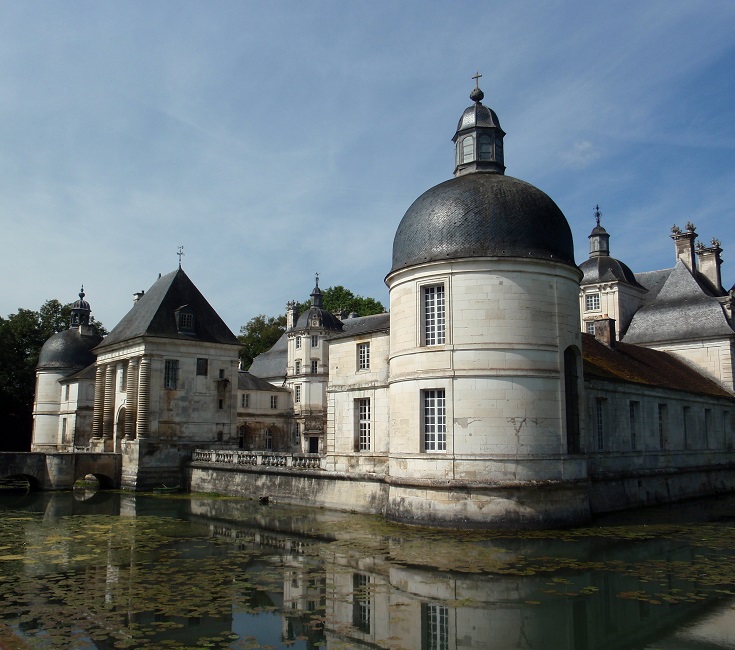
Château de Tanlay
A two-hour walk along the canal Tonnerre brings you to Château de Tanlay, The château has been owned by the Marquis of Tanlay since 1700 and the family still lives here, occupying one side of the château. A large section of the château is open to the public (closed on Tuesdays) but is accessible only during guided visits (commentary is in French but information sheets are available in several languages). Inside, the château has been left unrestored, evoking a sense of a place caught in time—the flecks of paint adorning the walls are the same as those seen by the noble family centuries ago.
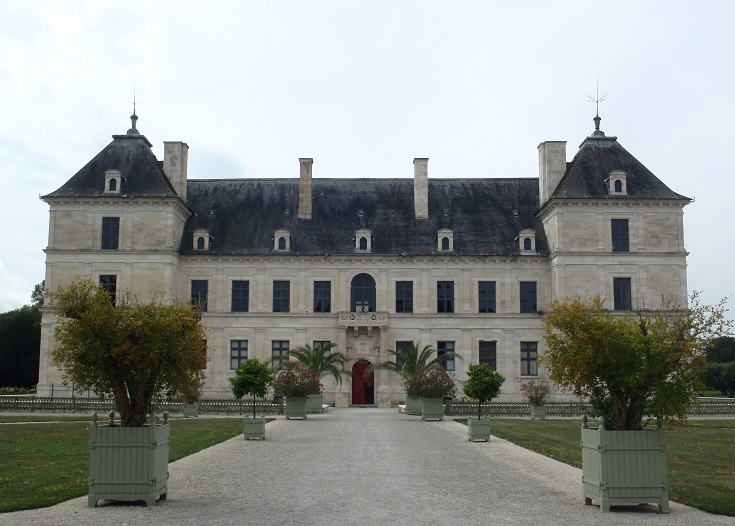
Château d’Ancy-le-Franc
In stark contrast to Château de Tanlay is Château d’Ancy-le-Franc which you’ll reach the following day. Designed by Italian architect Sébastiano Serlio in the 1540s for Viscount Antoine III, the château remains one of the best, and earliest, examples of Italian Renaissance architecture in France.
The interior has been painstakingly restored to show the rooms as they were decorated and used by past occupants and gives a fascinating insight into the daily life and politics of the time. Madame de Sévigné, whose published letters have given a unique insight into privileged life in the seventeenth century, was a frequent visitor to Château d’Ancy-le-Franc. Her sitting room remains just as she liked it, overlooking the gardens.
Take a closer look around Château d’Ancy-le-Franc and find a comprehensive list of accommodation.

Swans enjoy a swim in the parkland surrounding Château d’Ancy-le-Franc
On the fifth day, you’ll reach Château de Nuits, located 400 metres from the canal. Although I didn’t visit this château myself, after reading the brochure, perhaps I should have made the time: ‘…Nuits has both the charm and elegance of a pleasure villa with defensive duties of a military building. The interiors of the château reveal the way of life of their successive inhabitants and are an uncommon travel through past centuries.’

Picnic tables alongside the canal at Buffon
An hour or so before reaching Montbard, the canal passes la Grand Forge de Buffon—a forge that was, in 1768, the most modern in the world. Built by Goerges-Louis Leclerc, the forge was unusual in that it accommodated all steps in the manufacturing process—the furnace, refinery and foundry—in one place, as well as providing housing for the workers. Guided tours are available but opening hours vary according to the season (check the link for details).
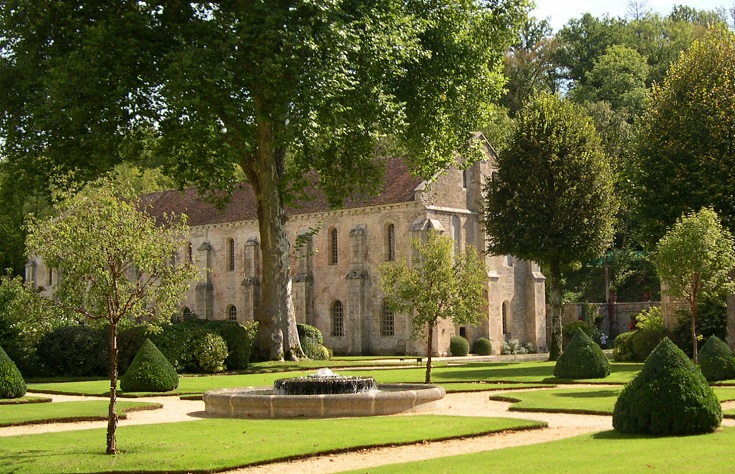
The old forge at Abbaye de Fontenay
Five kilometres (3.5 miles) from the canal at Montbard, is one of my favourite places in France—the stunningly beautiful Abbaye de Fontenay. Founded in 1118 by Saint Bernard, the abbey is the oldest and one of the most beautiful preserved Cistercian abbeys in Europe. (I recommend continuing your journey along the canal from Montbard by bicycle to allow plenty of time to visit the abbey. If you choose not to make the detour, take a virtual tour around the grounds at the link above.)
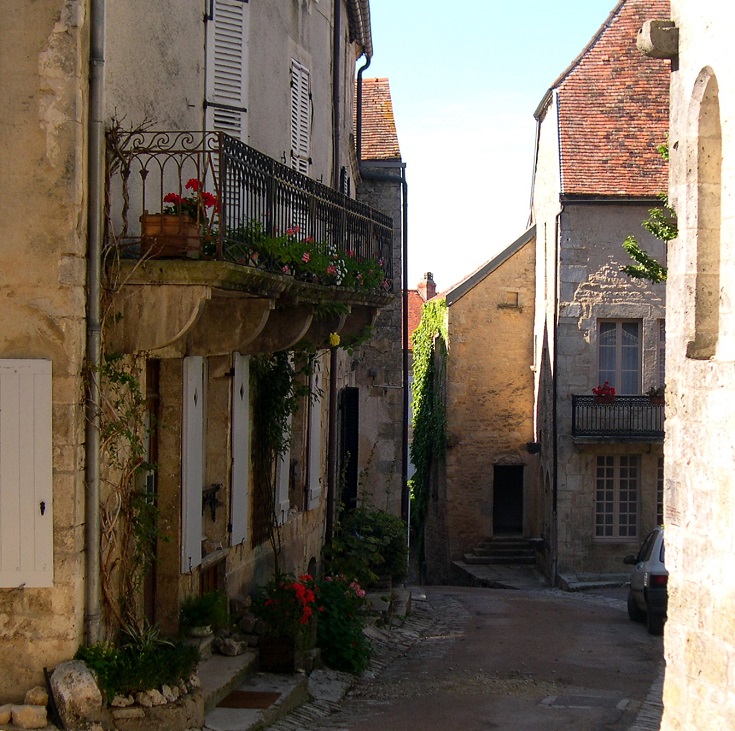
Picturesque back street in Flavigny-sur-Ozerain
As you leave Venarey-les-Laumes on the seventh day, follow cycle route BC1 (map available from the Tourist Office) to the ‘most beautiful village’ of Flavigny-sur-Ozerain. The village is the home of Anis de Flavigny, the aniseed lollies which have been made here in the abbey since the sixteenth century, but is perhaps better known as the location for the 2000 film Chocolat starring Juliette Binoche and Johnny Depp.
Taker a closer look around Flavigny-sur-Ozerain and find a comprehensive list of accommodation.
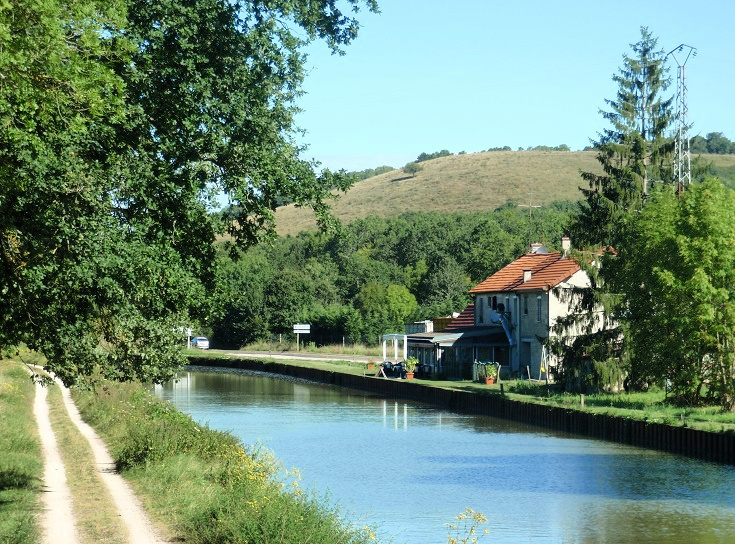
A welcome stop for lunch and a cool drink at La Raquette (between Pont-Royal and Pouilly-en-Auxois)
Between Pont-Royal and Pouilly-en-Auxois, the canal passes the remains of Château d’Éguilly, an imposing fortress-like castle with sections dating from the twelfth through to the eighteenth centuries (guided visits are no longer available but you can learn a little of the history of this fascinating castle from the website).

View of Châteauneuf-en-Auxois from the canal
As you approach Écluse 8 S Vandenesse (two hours walk past Pouilly-en-Auxois), you’ll the see the high stone walls and turrets of Châteauneuf-en-Auxois—the third of the ‘most beautiful villages’—perched high on a distant hill. Don’t try to ignore it, surrender and head up the hill—you’ll be glad you did!
Take a closer look around Châteauneuf-en-Auxois and find a comprehensive list of accommodation.
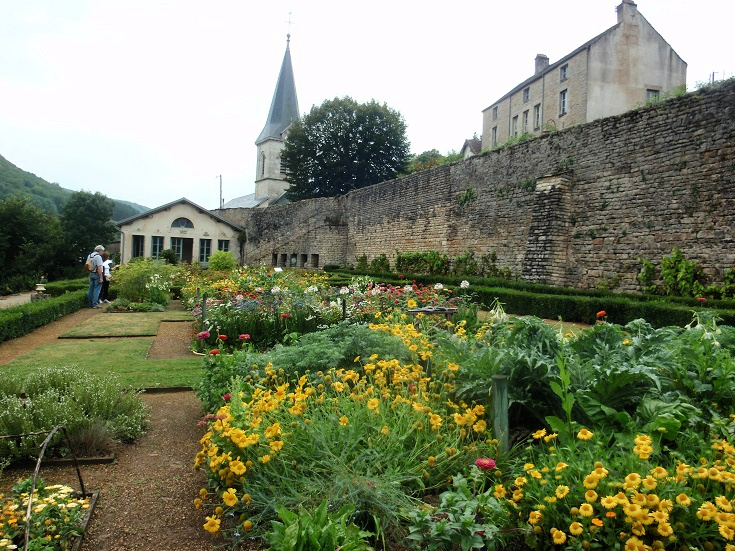
Les Jardins de Barbirey
A short walk up the hill from the canal at Barbirey-sur-Ouche, you’ll find les Jardins de Barbirey. Established in the nineteenth century around the château, the park extends over eight hectares and includes sprawling informal parklands and a potager, or vegetable and flower garden, on the terrace.

Entrance to the Pouilly tunnel
Experience the canal tunnel
At Pouilly-en-Auxois, the Burgundy Canal reaches its highest point. Rather than use locks to gain the necessary altitude, a 3.3 kilometre (two-mile) long tunnel was built 34 metres beneath the surface of the mountain.
Thirty-two air vents were built along the route to provide air to the Spanish and English prisoners working within the tunnel and to allow the removal of dirt from multiple points. This enabled work to be completed in six years instead of the estimated fifty years it would have taken, working only from the two end points. Twelve of the air vents remain and can be seen if you walk the path from above the tunnel.
With no room for the horses that towed the barges, the first boatmen had to manually pull their craft through the tunnel on a cable—a back-breaking trip usually taking ten hours. Thirty years later, a steam tug hauled each barge through, but by the end of the nineteenth century, an electric tug—powered by hydro-turbines and attached to a chain—was able to pull five fully loaded barges through at a time.
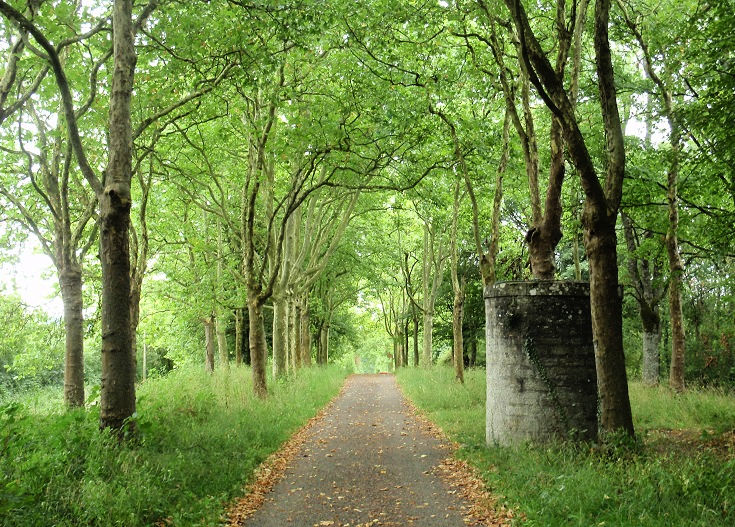
An air vent alongside the walking path above the Pouilly tunnel
Today, of course, the boats are motorised and the journey is much easier. There is still only room for one-way traffic through the tunnel and boom gates at each entrance control the flow of traffic, with six-hour windows in each direction.
When water levels are consistently high, the tunnel can be experienced by taking one of the cruises that leave from the port in Pouilly-en-Auxois. (Unfortunately, the cruise is not operating in 2025.)
The two-hour cruise travels to the first lock on the other side of the tunnel before returning to Pouilly-en-Auxois. The full-day cruise passes through eight locks on the way to Vandenesse-en-Auxois where it stops for lunch (lunch is not included in the fare).
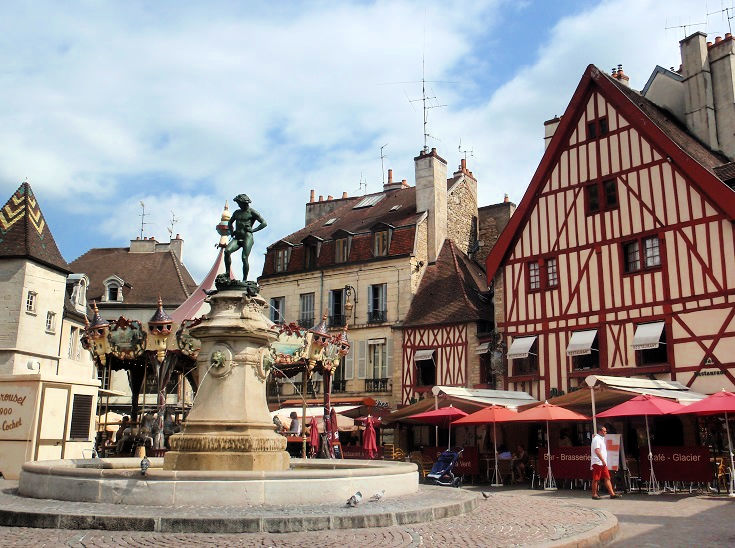
Place François Rude, Dijon
Visit Dijon
No visit to Burgundy is complete without a day or two spent exploring Dijon—a beautiful city famous for its distinctive red, yellow and green patterned roofs.
Call into the Tourist Office and pick up a copy of The Owl’s Trail—a handy booklet which includes a self-guided walk covering twenty-two of Dijon’s historic monuments.
If you have a little extra time, book a guided tour of nearby wineries towards Beaune and Chablis where some of the best vintages in France are produced.
While you are in town, enjoy a meal at one of the five Michelin-starred restaurants, and don’t forget to pick up a pot or two of authentic Dijon mustard!
Take a closer look around Dijon and find a comprehensive list of accommodation.

Stock up on trail mix at the local markets
As you walk through the towns along the path, you’ll discover fresh food markets overflowing with local produce. Pick up some seasonal fruit and home-made (à la maison) jams and cheese to add to your picnic basket.
Migennes—Thursday morning
Saint-Florentin—Monday and Saturday morning
Tonnerre—Wednesday and Saturday morning
Ancy-le-Franc—Thursday morning
Ravières—Tuesday morning
Montbard—Friday morning
Venarey-les-Laumes—Wednesday morning
Pouilly-en-Auxois—Friday evening
Pont-de-Pany—Thursday afternoon
Dijon—Tuesday, Thursday, Friday morning and Saturday
Saint-Jean-de-Losne—Wednesday morning
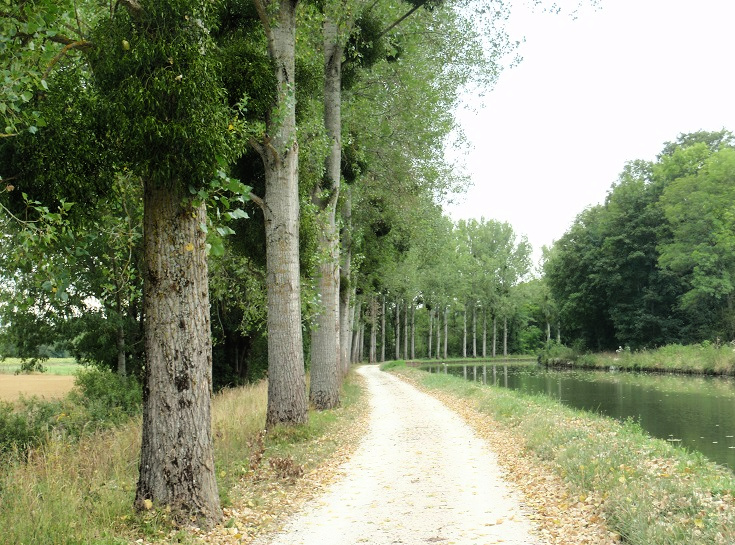
A short distance beyond Ecluse 73 Y Cry (between Nuits and Buffon)
For those with dodgy knees or a general aversion to hills, there is much to recommend a long tranquil walk following the gentle curves of a canal. As well as being easy on the legs, you’ll find it almost impossible to get lost—at least, not until you venture off the path in search of your accommodation for the night (which is exactly why the guidebook provides directions to and from the canal for each town!).
Purchase the 2025 (PDF) edition of the Burgundy Canal guidebooks.
Two guide books, 163 pages packed with everything you need to know to plan an itinerary and book accommodation (the morning before or six months earlier!) along the twelve-day, 240-kilometre (150-mile) walk along the Burgundy Canal.
Or purchase individually –
Melinda has compiled a series of practicable and beautiful walks with a wealth of good advice.
“We have lived in France, visited regularly over 35 years and done a lot of independent walking along roads and trails generally using local maps. What has been lacking is a publication in English that combined sensible general advice on walking in France with detailed instructions on routes and facilities on interesting off-road trails.
I think Melinda Lusmore has achieved this in her website and publications. She has compiled a series of practicable and beautiful walks combined with geographical instructions and a wealth of good advice. She has been very helpful too in our direct email contact.
We are already planning one of her walks later this year and will report on our experience. We have always loved France and know it has unlimited, small, unsung wonders in the rural areas. Go and find them!” Coral Hoggett
Look inside the BURGUNDY CANAL (PDF) guidebooks
Or explore other canal walks in France
